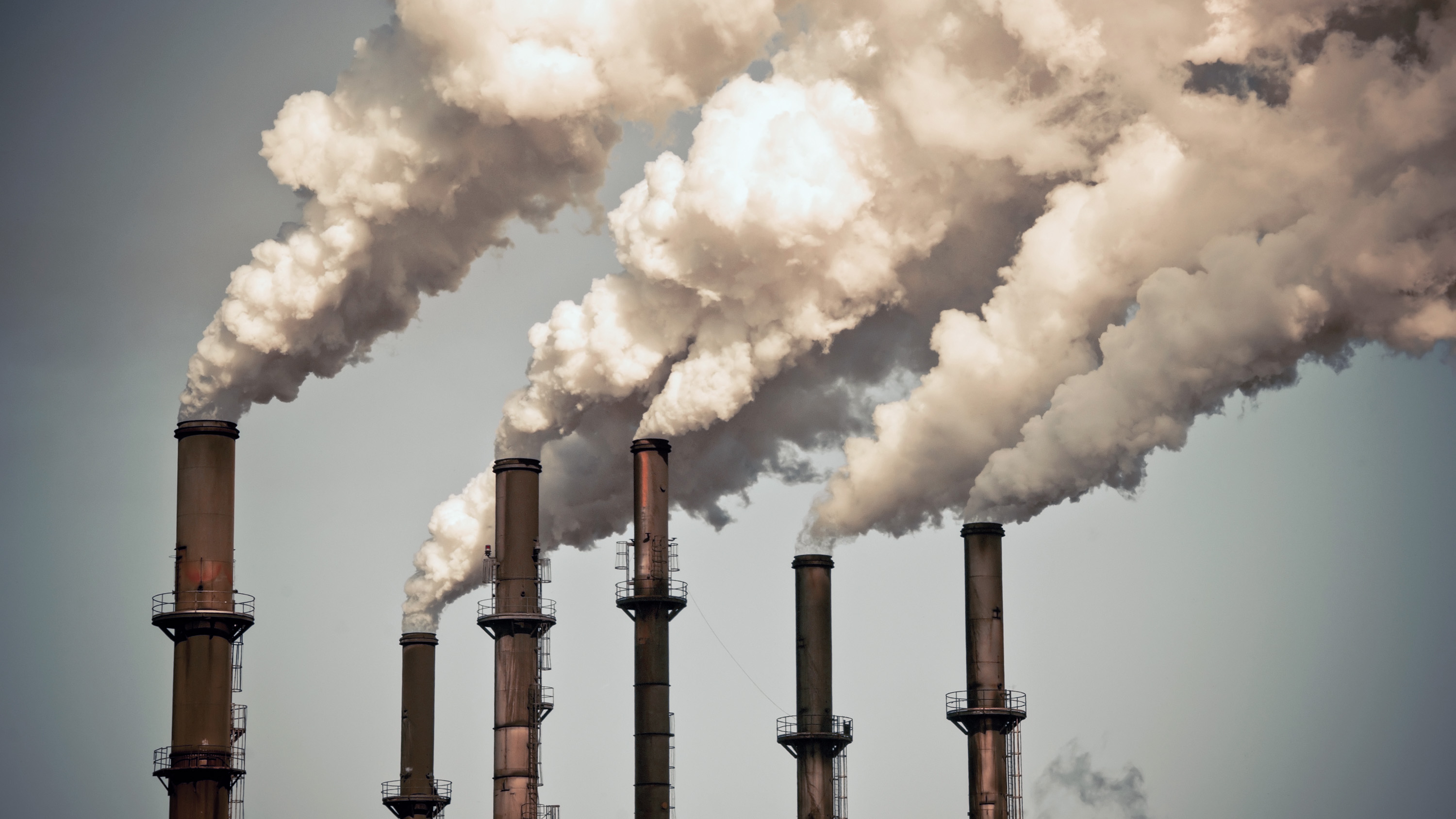Going after the big four
An ambitious project with the potential to slash nearly half of industrial carbon emissions.

Climate Grand Challenges Flagship Project:
Center for Electrification and Decarbonization of Industry
Part of a special report on MIT’s Climate Grand Challenges Initiative
When Yet-Ming Chiang ’80, ScD ’85, heard the call for proposals for MIT’s Grand Climate Challenges, he knew fairly quickly where to look for ideas.
“There are four industries that, together, release almost half of the industrial emissions in the world, and those are cement, steel, ammonia, and ethylene,” Chiang says. “And these four together are 15% of human emissions.”
In those numbers, Chiang and his MIT colleagues see a huge opportunity to lower the carbon emissions that are driving climate change. “For me, the immediate thought was the idea of using electricity instead of fossil fuels. Electricity is going to be low-cost and widely abundant,” he says. “And when you have very low-cost energy, you can do one of two things: store it in a battery or use it to produce something that’s a product for societal use.”
The Kyocera Professor of Materials Science and Engineering, Chiang has spent much of his career researching electrochemical energy storage for improved batteries and has launched three battery companies, including A123 Systems, based on his research at MIT. He realized that if these four industrial products, which are heavily reliant on fossil fuels, could instead be made through electrochemical processes, he and his colleagues could offer a promising pathway to quickly reducing emissions from those industries, which are otherwise projected to increase in the coming decades.
The products are, of course, ubiquitous. Steel is used in buildings and cars, and cement in buildings and infrastructure. Ammonia is the feedstock for fertilizer, and ethylene is a building block for some types of plastic. “In many ways, they are the backbone of society,” Chiang explains.
But in many cases they’re made through high-temperature processes powered by fossil fuels, and in others fossil fuels provide the raw material that goes into the end product. Coal typically powers cement kilns and steel plants; ammonia is synthesized with hydrogen, which comes from fossil-fuel feedstocks, including coal and oil; and ethylene is made largely from natural gas.


The processes underlying these industries are so old, embedded, and entrenched in society and the economy that it’s almost impossible to conceive of changing them. And because the four products are commodities in which manufacturers have invested a great deal of capital and infrastructure, there has been little incentive to invest in developing cleaner processes. But figuring out how to manufacture them using electrochemical techniques would have a big payoff for the climate. So Chiang, along with co-lead Bilge Yildiz, PhD ’03, and 14 other MIT colleagues, proposed creating the Center for Electrification and Decarbonization of Industry.
Take cement, for example. The process of producing one ton of cement—the most widely used industrial material—emits about one ton of carbon dioxide. At current production rates, that’s about 4 billion tons a year. Half of that comes from breaking down limestone, a main ingredient in cement; the other half is from the fossil fuels, mostly coal, used to heat cement kilns in order to decompose the limestone and then to form the calcium silicates (known as “clinker”) that are ultimately ground to make cement.
But, Chiang says, scientists can instead decompose the limestone at ambient temperatures using electrochemical manipulation. While it’s well known that electrolysis splits water, producing oxygen and hydrogen gas, it’s less well known that the process also produces an acid and a base. This acid can be used to dissolve limestone, and the resulting dissolved calcium can be precipitated as lime for making cement.
This electrochemical approach not only eliminates the need for heat generation but makes it easier to capture the CO2 released from the limestone as it dissolves—and keep it out of the atmosphere. Hot CO2 emitted from a kiln flue is diluted and contaminated, so it’s tricky to extract. But electrochemically released CO2 is cold, concentrated, and pure.
Next, the lime could be used to make clinker in the conventional process, which would reduce cement’s emissions since the CO2 has been captured. In the longer term, the research team envisions combining the lime with another type of silicate that would react with it at room temperature to form cement. That process, too, would eliminate the need for kilns—and the fossil fuels required to heat them.
“We’re aiming for complete decarbonization,” Chiang says. And he adds that electrochemical processes could reduce the high temperatures required today for steel production—and potentially even allow production at ambient temperatures.
Shifting to electrochemical breakdown and reconstruction of chemical bonds would also make the production of ammonia and ethylene much cleaner. “Electrochemistry gives us a key advantage, a leverage … to drive these reactions at more moderate, milder conditions—in particular, much reduced temperatures—which makes the process more manageable,” Yildiz explained at the public unveiling of the project in April.
Yildiz, the Breene M. Kerr (1951) Professor in the departments of Nuclear Science and Engineering and Materials Science and Engineering, explained another benefit of the electrochemical process: it could eliminate waste, by using the by-product from one process as the feedstock for another.
For example, the hydrogen that’s the by-product of electrochemical ethylene synthesis could be used to extract iron from iron ore without carbon dioxide emissions. And the carbon dioxide generated from limestone conversion in cement production could be used as feedstock for electrochemical ethylene synthesis.
The center will focus initially on fundamental science (while factoring in economic viability), working with MIT students and postdocs, and then graduate to small-scale pilot demonstrations, Yildiz said. Finally, if all goes well, the advances will be tested in the field through startups and collaborations with industry.
“We feel very lucky to be at MIT to address this Climate Grand Challenge because we can bring together the needed key expertise, all the way from atoms to enterprise, under the same roof,” she said.
Chiang says he’s still somewhat surprised that their project was chosen, given the number of strong ideas.
“I spent most of last August really sweating over this proposal. I felt like I was writing my PhD thesis again,” he says.
“Being selected felt a little bit like the dog that caught the school bus,” he adds. “We wrote a very ambitious proposal. It wasn’t just a proposal to do scientific research and engineering, but to find a pathway to really having an impact by creating new technology that we can commercialize within five years. Everyone realizes the urgency of the problem. There’s no such thing as too soon.”
This story is part of a series, MIT Climate Grand Challenges: Hacking climate change.
Keep Reading
Most Popular
Large language models can do jaw-dropping things. But nobody knows exactly why.
And that's a problem. Figuring it out is one of the biggest scientific puzzles of our time and a crucial step towards controlling more powerful future models.
The problem with plug-in hybrids? Their drivers.
Plug-in hybrids are often sold as a transition to EVs, but new data from Europe shows we’re still underestimating the emissions they produce.
Google DeepMind’s new generative model makes Super Mario–like games from scratch
Genie learns how to control games by watching hours and hours of video. It could help train next-gen robots too.
How scientists traced a mysterious covid case back to six toilets
When wastewater surveillance turns into a hunt for a single infected individual, the ethics get tricky.
Stay connected
Get the latest updates from
MIT Technology Review
Discover special offers, top stories, upcoming events, and more.